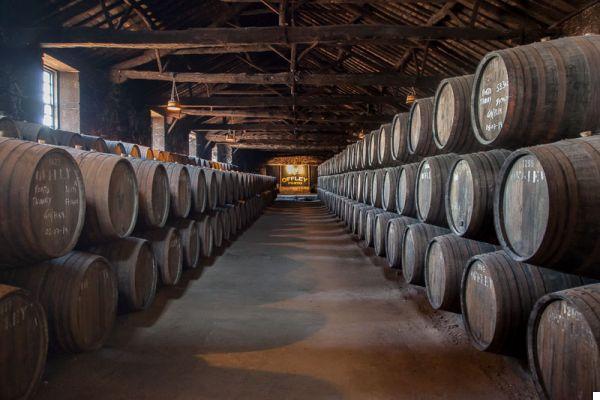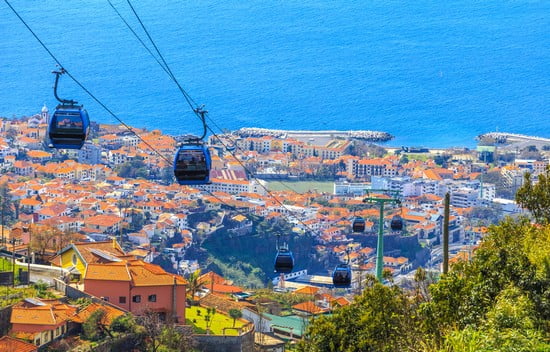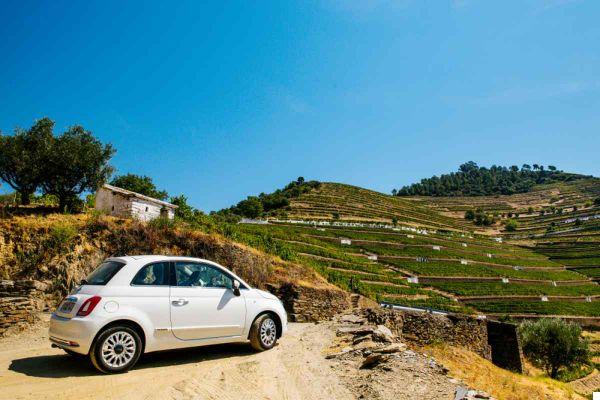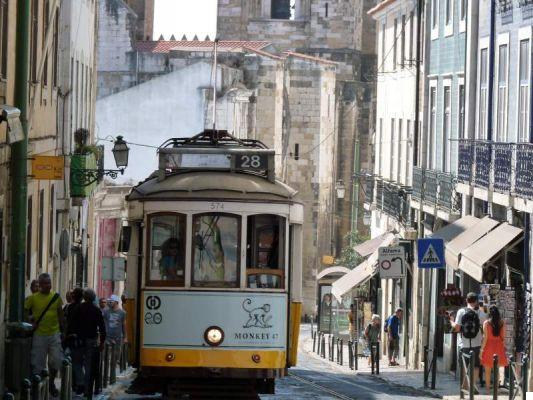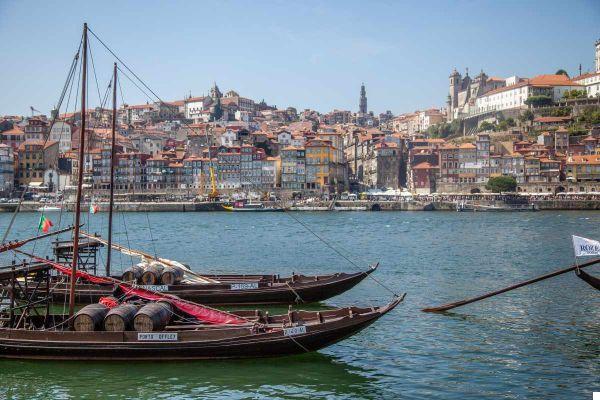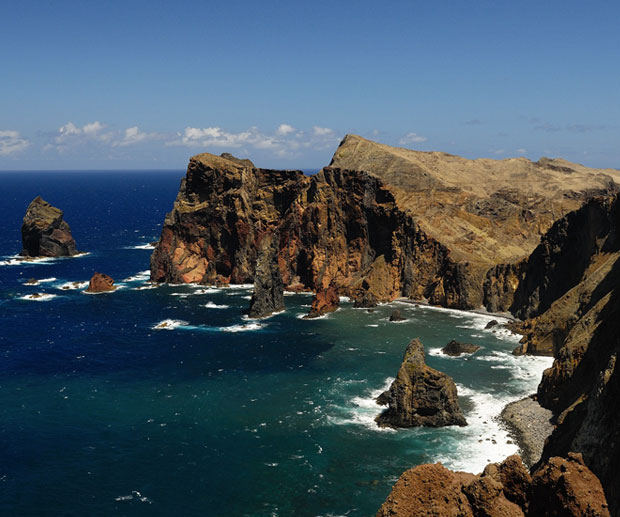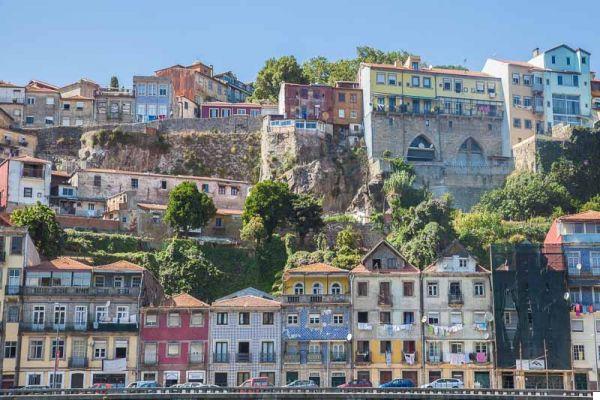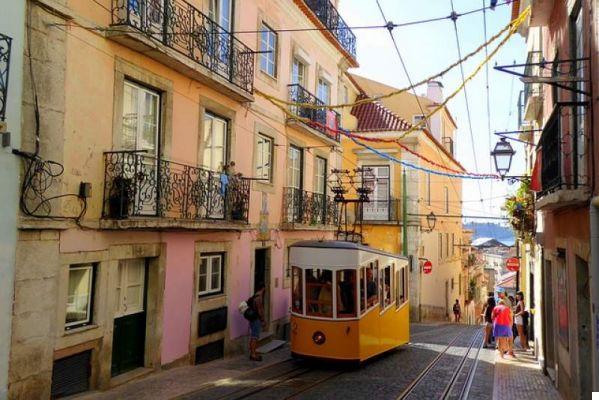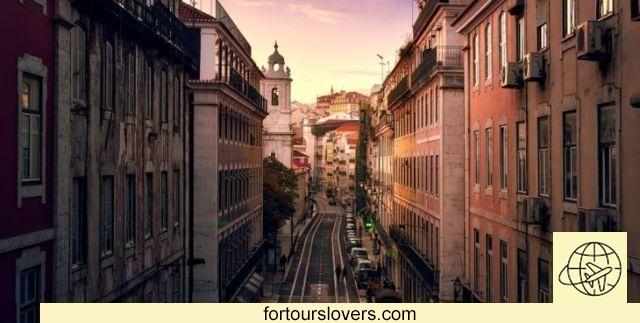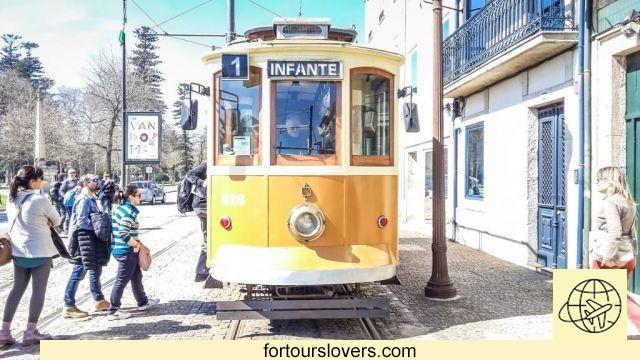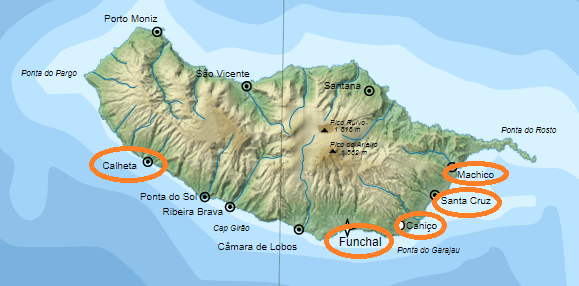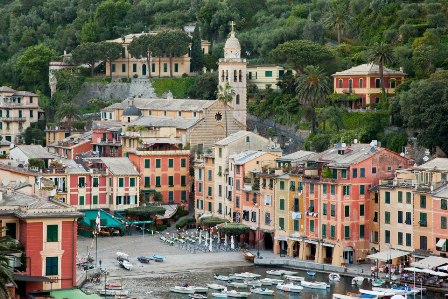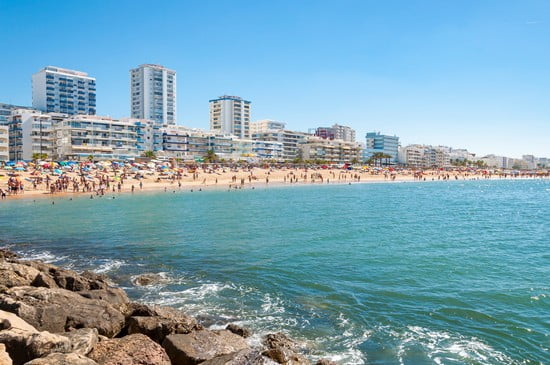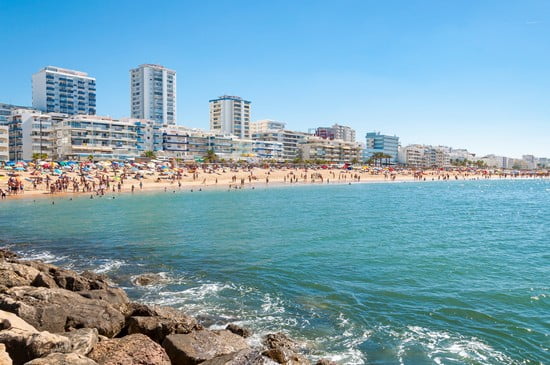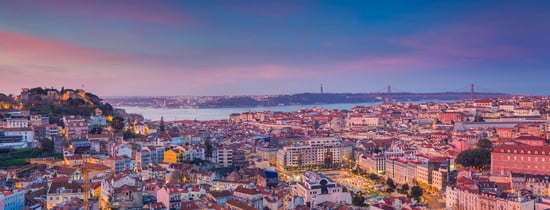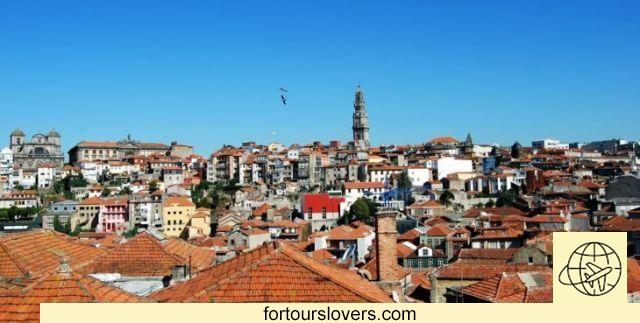
Porto
11 things to do and see in Porto and 1 not to doPorto (Also Port) and the third city of Portugal but don't tell its inhabitants. The latter prefer the appellation of "Capital of the north" ('a capital do norte, in Portuguese) by which the city is best known within national borders. In fact, from an economic-industrial point of view Porto has nothing to envy to the capital Lisbon and, in the last 20 years, it has begun to have its say in the tourism sector too. About the UNESCO protection of 1996 relating to the historic center of Riverside and subsequent recognition which European Capital of Culture, in 2001. Rewards that have gratified a hardworking and proud people, historically famous for the victorious opposition to the Moors first and then to the Napoleonic troops. In short, choosing to visit Porto is not a bad idea at all, especially since one is enough long weekend to get the right knowledge. Below, the main attractions to visit in the city. Are you looking for a hotel? Click here for the list of recommended hotels. Happy reading.
1 Ribeira
Getting to know Porto can only begin with Ribeira, medieval heart of the city, since 1996 under guardianship UNESCO international convention against doping in the sport. It is a labyrinth of alleys, mostly cobbled, which lead to the Douro River. It is in this area that various city attractions are concentrated (the Cathedral, the Church of San Francesco, the Palazzo della Borsa etc.) and consequently many clubs, bars and restaurants where part of the city's social life takes place (for the by night we point out the “Galerias”, about 500 meters from the Torre dos Clerigos see point 6). From this point of view, Cais de Ribeira, the riverside walk, is a must, as well as i barcos rabelos (see point 10) e Praca da Ribeira, the homonymous square surrounded by noble palaces. Visiting the neighborhood takes a whole day away. Even two, considering the points of interest to which we referred first and which we are going to see in more detail below.
2 The Cathedral
If you want to admire the Ribeira district from above, you have to go up the hill that houses the Sé, the Cathedral of Porto. Obviously, in addition to the view, the building, whose architectural lines trace the history of the city. The Romanesque facade in granite; the two crenellated towers; the Gothic rose window; The Baroque altarpiece in the Chapel of the Blessed Sacrament; the cloister with the characteristic azulejos; there loggia; the courtyards and so much more. In the Sé, in 1387, the wedding between Joao I e Phillip of Lancaster, a political marriage which sanctioned the beginning of a centuries-old alliance between Portugal and England, mirroring the other of the time between France and Castile. The advice I say visit the Self at sunset, with the twilight light spreading evenly over the Ribeira and the surrounding alleys. Not to be missed!
3 Church of San Francesco
undoubtedly the most beautiful church in Porto, as well as one of the most beautiful in Portugal. Yet, the severity of the facade and the Gothic-style rose window suggest something else. Therefore, one must not trust appearances and go inside the Igreja de São Francisco to admire one of the most opulent expressions of the Lusitanian baroque. A triumph of golden ornaments which finds its culmination intree of São Francisco by Jesse, a work of art in gilded wood depicting the genealogy of Christ. What is striking is the detail of the inlays with the figures of Jesus, Joseph, Mary, Solomon, King David and others. Also very beautiful Chapel of St. John the Baptist in which traces of the Manueline style, the Portuguese late Gothic that deeply marked the art of the sixteenth century. But that's not all, because they are absolutely worth a visit too Catacombs and the opposite Ecclesiastical Museum which, in addition to stoles, vestments and episcopal ornaments, houses several altarpieces and ceramic works also attributable to the Baroque period. To be seen!
4 Stock Exchange Building
La Arab Room, built in the style of the Alhambra complex in Granada, the guided tour (the only way of access) of the Palacio da Bolsa in Porto is worthwhile on its own. Not that the others do not deserve to be visited, but there is no doubt that this room in Neo-Moorish style both the flagship of the building. The reason, also here as for the previous Church of San Francesco, is in the opulence of the gilded inlays. There is practically no surface on this wing of the building that is devoid of ornamentation. It goes without saying, there is so much more to see: from Patio of the Nations, where the city stock exchange once operated, at the Hall of the Court, where the ceremonies for the denomination "Vintage" to Port wines take place, up to Gustave Eiffel's study designer of the Maria Pia bridge near the more famous Ponte de Dom Luis I (see next point). In short, Palacio da Bolsa is a must for anyone who is really interested in learning more about the genius loci of Porto. Or, better still, to deepen the economic history of the city, since the building was commissioned in the mid-nineteenth century by the local Trade Association which, incidentally, still holds its assemblies inside the building.
5 Ponte de Dom Luis I
Un "Icon bridge" both for the beautiful view of the old part of the city and, above all, for the history that made it necessary to build it. In 1809, during the Napoleonic invasion, thousands of people, in an attempt to save themselves, escaped on wooden boats which at the time represented the only pedestrian crossing between Porto and the "sister city" of Vila Nova de Gaia on the opposite bank of the Douro River. As it is easy to understand, the boats, which were used for the transport of Port wine, could not bear the weight of the fleeing crowd, causing the death of many people. Years after that tragedy, after a series of other consolidation works on the river banks, the construction of the bridge, completed in 1886, was started. The work bears the signature of theBelgian engineer Theophile Seyrig, pupil of the most famous Gustave Eiffel who, as we have seen, during his stay in the city for the construction of the other bridge, the Maria Pia, had a studio in the beautiful Palacio da Bolsa. The Ponte de Dom Luis I grows up two levels: the upper floor is reserved for a city metro line; the lower one, instead, to vehicular traffic with sidewalks to the side to allow the transit of pedestrians. As stated at the beginning, the Ponte de Dom Luis I guarantees an exceptional view. The advice, therefore, is of bring your camera with you.
6 Tower of the Clerics
In addition to the Sé, the Igreja de São Francisco and the Palacio da Bolsa, among the architectural symbols of Porto we should not forget the Torre dei Clierici (Clérigos Church, in Portuguese). High 76 meters this tower gives a wonderful view of the city even if climbing to the top costs a bit of effort. There are almost 250 steps to climb but, unless you suffer from vertigo, it is absolutely worth it. The Torre dei Chierici is located atwestern end of the homonymous church and how this was designed in the mid-700s by the architect of Italian origin Niccolò Nasoni. The latter, creator of many other works in the city, is buried in a niche of the building, as if he were aware of the prestige that his work would have acquired over time. To be seen!
7 Sao Bento station
One of the most beautiful railway stations in Europe. The contrast between the exterior facade, more like a government building than a station, and the atrium all decorated with the characteristic tiling, immediately made this place atourist attraction far beyond the functionality of the building. The ceramics that decorate the atrium tell the story of Portugal and were made in 1930 by theartist Jorge Colaço. The station, on the other hand, dates back to a few years earlier (1903) and bears the signature of José Marques da SIlva, architect Portuguese but of French training. To be seen!
8 Avenida dos Aliados
Also worth seeing is Avenida dos Aliados which, like the São Bento station, is affected by theFrench architectural influence from the end of the 800th century. And the central station can be taken as an initial point of reference for this walk to discover the good lounge in Porto, Real natural shopping center famous, among other things, for hosting the municipal building. Here, along the wide avenues of the Avenida, the 24 June Feast of St. John by far the most heartfelt anniversary in the city, as always here the celebrations take place on the occasion of the home team's football victories. In short, after Ribeira, Avenida dos Aliados is another unmissable stop on a holiday in Porto. A stage that, if you want to fully enjoy the countless architectural details present, takes about half a day. To do!
9 Porto Tram City Tour
If Lisbon has the Electric 28, Porto "responds" with theElectrico 22, the tram line that crosses the most characteristic streets of the historic city center. Line 22 is not the only one, there are two others, the 1 and 18, which are also very popular with tourists who like to explore the city by tram. Line 1 is the river line which from the city center reaches the mouth of the Douro near the Jardim de Passeio Alegre. The 18, on the other hand, crosses the Massarelos neighborhood, on the western bank of the river and ends at another very important public green area, Garden of Cordoaria. In Massarelos, right on the riverside is the Museu do Vinho do Porto, a small museum space dedicated to the knowledge of the famous Portuguese fortified wine. For the rest, what has already been mentioned about Lisbon applies: to enjoy the tour is preferable to move early in the morning and choose to go up to one of the two terminus of the chosen tram. All the information on costs, timetables and stops can be found at this link: http://www.stcp.pt/en/tourism/porto-tram-city-tour.
10 Cruise of the 6 bridges
Among the things to do in Porto is definitely worth mentioning boat trip on the Douro. The formulas are different. One of the most popular is the Cruise of the 6 Bridges. And already because we have only mentioned two so far, the “Luís” and the “Dona Maria”, but there are four others to consider: “Infante”, “S.João”, “Arrábida” and “Freixo”. The cruise of the 6 bridges allows the view from the sea of all the points of interest described so far. Of course they are several companies that make the tour, while the type of boat, even if adapted for the purpose, is always the same: you travel aboard the characteristic "Barcos rabelos", the canals that were once used to transport Porto barrels to Vila Nova de Gaia. For more information on the Cruise of the 6 bridges you can consult the following sites: www.douroacima.pt and www.douroazul.com.
11 Vila Nova de Gaia
You cannot say that you have been to Porto without a visit to the "Twin" Vila Nova de Gaia. It is about second city of Portugal by number of inhabitants after Lisbon (Porto, as we said at the beginning, is the third) but what makes its knowledge indispensable is the centuries-old wine production. Indeed, it is on this bank of the Douro River that the Porto's finest wineries, the famous fortified wine said to have been invented by the British by adding brandy to local wine. Taking part in a guided tour of one of the Vila Nova de Gaia wineries is therefore essential to learn how to distinguish the different varieties that have arisen over the years. Obviously there are many more things to see in Vila Nova de Gaia: we point out, among many, the Mosteiro da serra do pilar, a XNUMXth century monastery owned by the army (guided tours are available) and the Morro Garden, public park in the hills accessible by the funivia (Teleferico de Gaia), which in the meantime has also become aicon because of the breathtaking view on the river and the city.
1 Beware of pickpockets
Porto is an absolutely quiet city. As in all cities, however, especially in crowded places, there is a possibility that there is some malicious. Therefore, be careful not to leave objects unattended, not to walk with an open bag and not to wear watches, necklaces, earrings, flashy and valuable bracelets. Simple precautions to which we must add the other to pay attention after sunset to the alleys around the RIbeira and the station.




